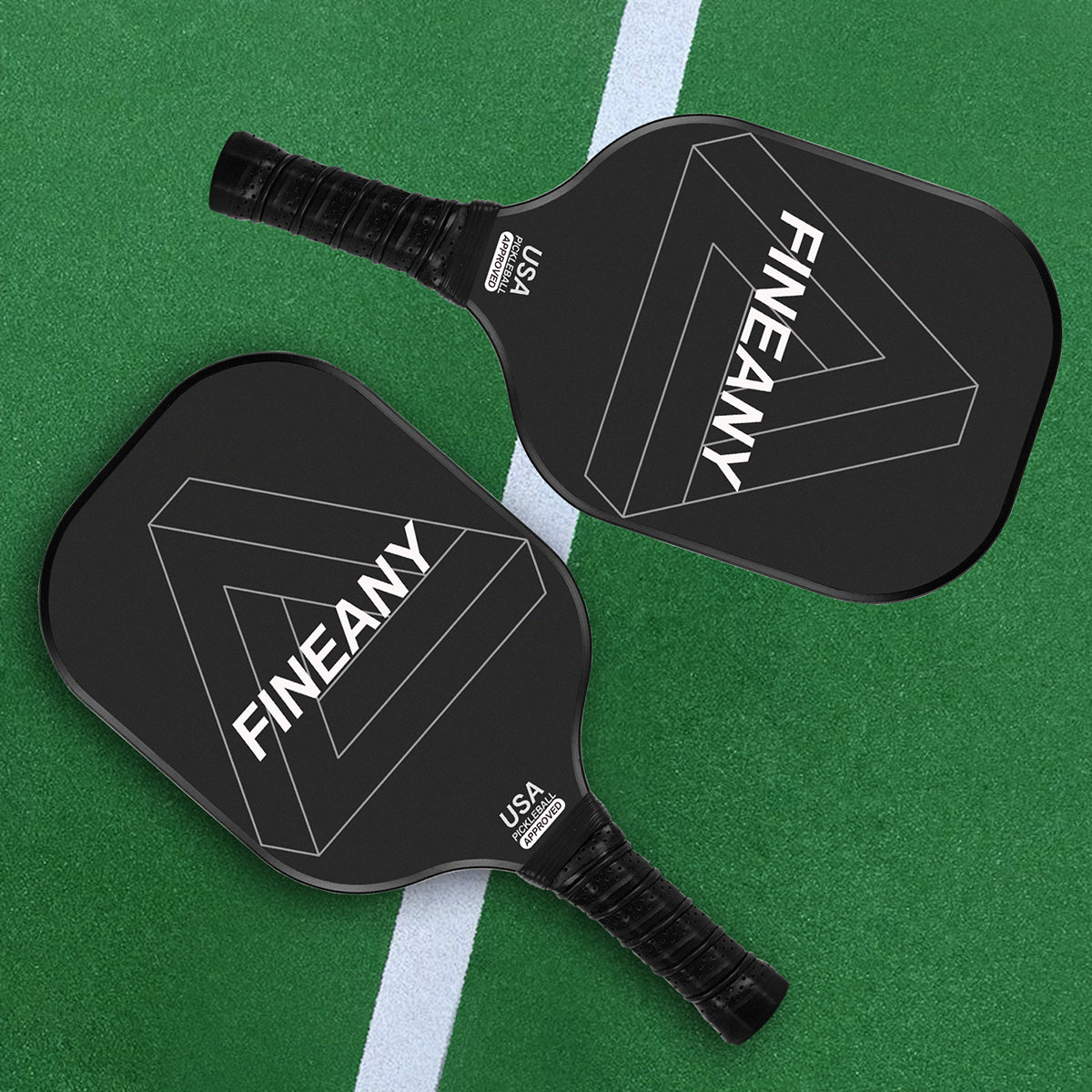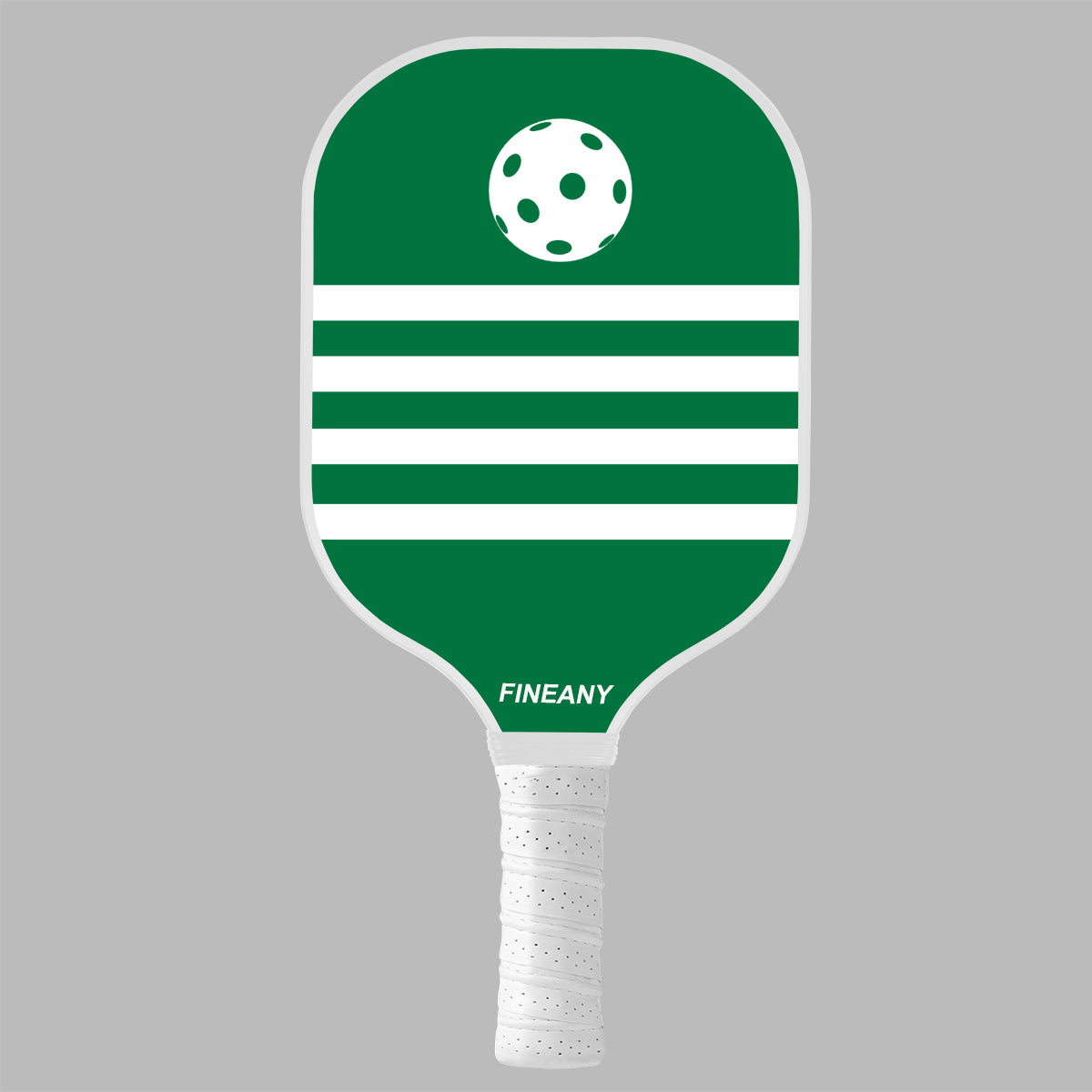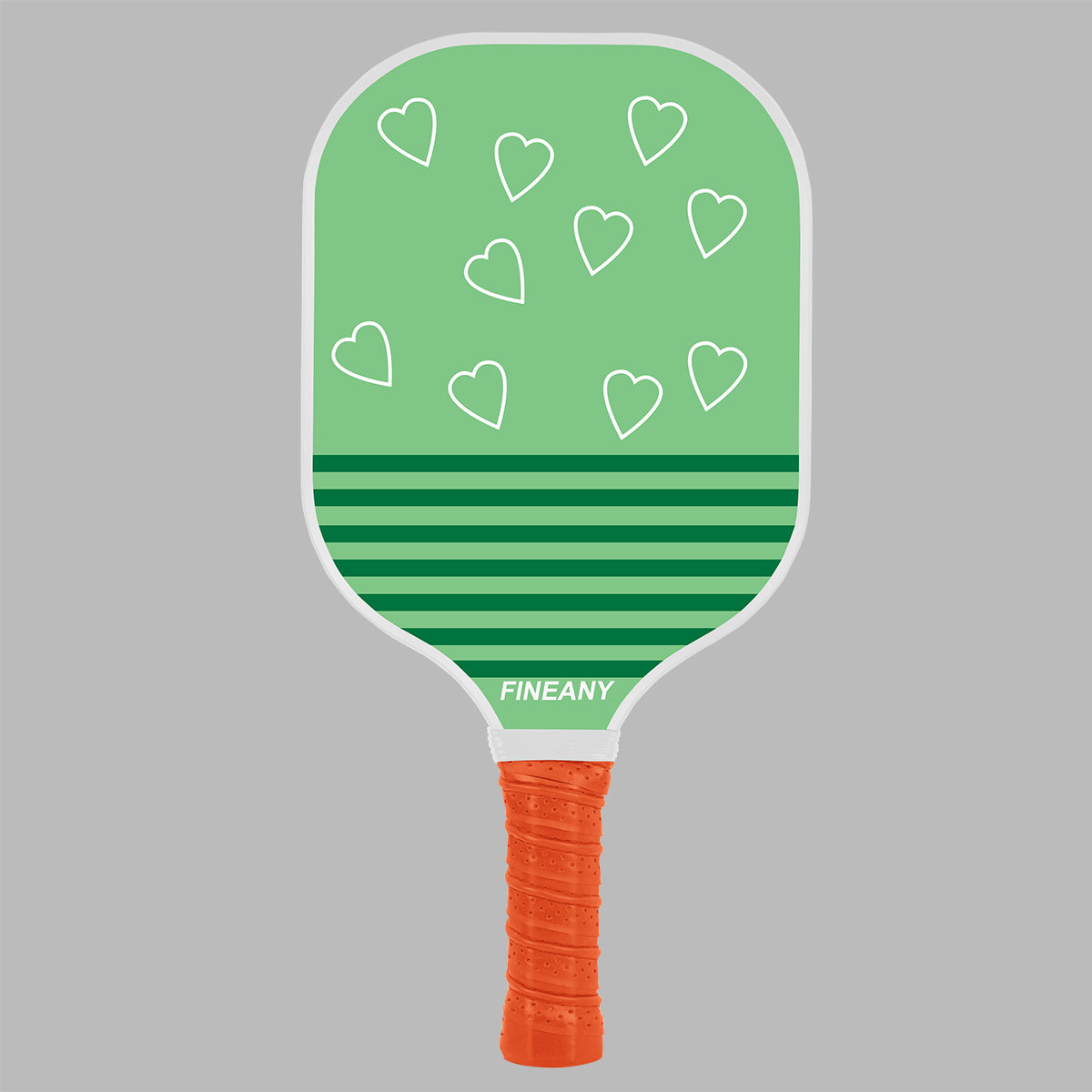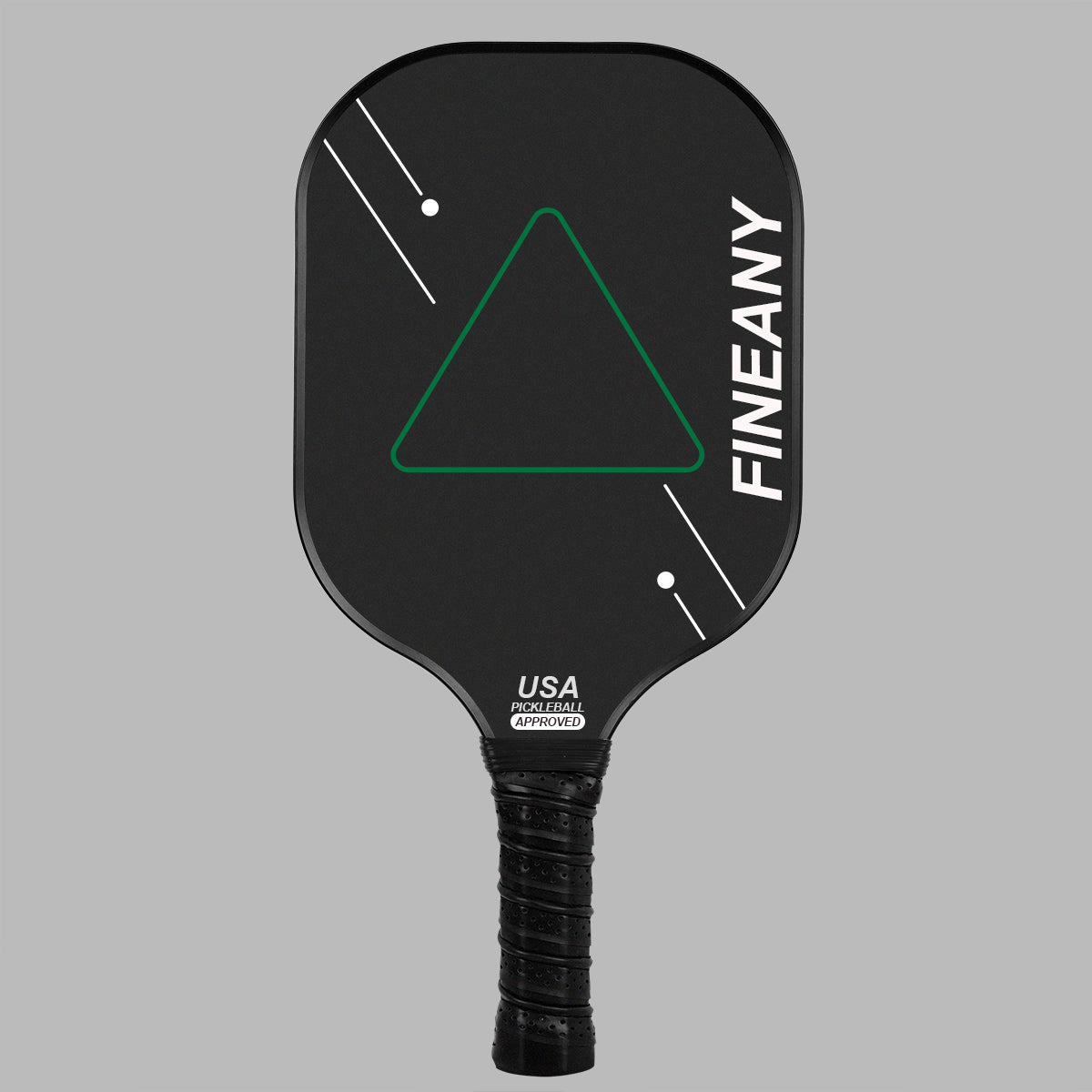In the United States, pickleball and badminton are both popular racket sports. As an emerging sport, pickleball has been growing rapidly in recent years and has been loved by people of all ages.
Pickleball is a sport that combines elements of tennis, table tennis and badminton. The 33rd Summer Olympic Games will be held in Paris, France on July 26, 2024. At the 2024 Paris Olympics, pickleball was listed as an Olympic demonstration event for the first time, and it is likely to become an official event at the 2028 Los Angeles Olympics.
Pickleball originated in South America and is an emerging sport that combines the characteristics of multiple ball sports. During the game, both feet must stand outside the baseline, the ball must be hit with a racket before landing, and the ball must fall in the diagonally opposite playing area and must not be pressed on the non-volley line. The pickleball competition field is small and requires fast sprinting and flexible movement.
Pickleball is relatively easy to get started and suitable for beginners. Pickleball is an organic sport that helps to strengthen cardiopulmonary function and coordination. Pickleball is suitable for people of all ages, especially for adults who have lost the conditions to continue playing badminton or want to take on more challenging sports.
Badminton is a long-standing, global ball sport that requires a certain level of physical fitness and technical skills. Badminton focuses more on technical and tactical training, and requires patience and perseverance to master. Badminton is a full-body sport that can help enhance cardiopulmonary function, improve reaction ability and coordination ability. Badminton has a larger competition venue and requires a larger space to play.
Although both pickleball and badminton are ball sports, their rules, gameplay and applicable groups are different. Pickleball is more suitable for beginners because it is easier to get started, and the demand for venues and equipment costs are lower. Badminton is a more comprehensive and high-tech sport suitable for athletes with a certain foundation and experience.
There are significant differences between pickleball and badminton in terms of equipment, rules, venue size and sports characteristics. Although both can be played indoors and outdoors and emphasize reaction speed and skills, the specific gameplay and experience are very different. This article will detail the key differences between the two sports to help you better understand them and shed light on the reasons why pickleball is becoming increasingly popular among badminton players.
How Are Pickleball and Badminton Different?
There are four key differences between badminton and pickleball, including:
Rackets and Equipment Comparison
Game Rules Comparison
Court Comparison
Feature Comparison
Pickleball Paddles vs. Badminton Rackets Equipment Comparison
Pickleball is easy to carry, while badminton requires more storage space due to the large size and weight of the equipment. Pickleball equipment (whether it is pickleball balls or rackets) is easier to store than badminton equipment, and is generally lighter and smaller. When discussing the differences between pickleball and badminton, the weight of the equipment, especially the weight of the rackets, is a significant difference. Understanding the difference in racket weight between the two sports is crucial for players when choosing and adapting to the game. This article will compare the weight of Pickleball Paddles and badminton rackets in detail to help you better understand the differences between the two sports.
Pickleball Paddles
Pickleball Paddles are simple in design and are usually made of composite materials or wood. Here are the main features of a pickleball racket:
Average weight: 7 to 9 ounces (about 198 to 255 grams).
Material: Common materials include composite materials (such as carbon fiber, fiberglass) and wood.
Size: The racket is generally 15.5 to 16.5 inches (about 39.4 to 41.9 cm) long, with a wider width on the hitting surface.
Shape: Pickleball Paddles are short and wide, suitable for quick reactions and precise shots.
Construction: The racket usually has no string, but a solid panel, and the surface may be covered with a layer of texture to increase ball control.
Badminton racket
Badminton rackets are more sophisticated in design and are usually made of high-performance materials to provide lightness and high strength. Here are the main features of a badminton racket:
Average weight: 2.5 to 3.5 ounces (about 70 to 100 grams).
Material: Mostly made of carbon fiber, aluminum alloy or composite materials to ensure lightness and durability.
Size: Rackets are generally 26 to 27 inches long with a narrow hitting surface.
Shape: Badminton rackets are long and narrow, suitable for fast swings and precise control.
Construction: The racket consists of a frame with a wire, which is usually made of synthetic fibers and has high tension to ensure accuracy and power of the shot.
Different rules for pickleball and badminton
Although both are racket sports, pickleball and badminton have significant differences in game rules, scoring methods, court requirements and game strategies. This article will compare the rules of pickleball and badminton in detail to help you better understand the differences between the two sports.
Serving rules
Pickleball serving rules
Serving method: The serve must be made with the racket below the waist. When serving, the ball must be served diagonally to the opponent's serving area.
Serving Area: When serving, the ball must land in the opponent's serving area and cannot land in the non-volleying area (kitchen area).
Scoring: Only the serving side can score points. Each game is usually played to 11 points. You must lead by at least 2 points to win.
Badminton Serving Rules
Serving Method: The serve must also be made in the underhand serve method, with the contact point between the racket and the ball below the waist. When serving, the ball must be served diagonally to the opponent's serving area.
Serving Area: The serving area is different for doubles and singles. In doubles, the serve must land between the opponent's short serve line and long serve line; in singles, the serve must land between the opponent's short serve line and the baseline.
Scoring: You can score points in each round. The game is usually played to 21 points. You must lead by at least 2 points to win.
Game Rules
Pickleball Game Rules
Two Bounce Rule: After receiving and serving, the ball must bounce once on each side before a volley can be made.
Non-volley zone: The 7-foot area on both sides of the net is called the kitchen area. Players cannot volley in this area.
Scoring rules: Only serving can score points. A game usually goes to 11 points, and you need to be at least 2 points ahead to win.
Badminton game rules
Double and singles rules: Badminton has two game formats, doubles and singles. The court size and serving area of doubles and singles are different.
Changing sides rule: After each game, the two sides need to change courts. When one side gets 11 points first, it is also necessary to change sides.
Timeout rule: In each game, when one side reaches 11 points first, both sides have a 60-second break. After the game, there is a 2-minute break.
Scoring rules
Pickleball scoring rules
Scoring method: Only serving can score points. A game usually goes to 11 points, and you need to be at least 2 points ahead to win. The game can go to 15 or 21 points, depending on the rules of the event.
Number of games: Usually the best of three games is adopted, that is, the player or team that wins two games first wins.
Scoring rules for badminton
Scoring method: You can score in each round, regardless of which side serves. The game is usually 21 points, and you must lead by at least 2 points to win.
Number of games: Usually the best of three games is adopted, that is, the player or team that wins two games first wins.
Court requirements
Pickleball court requirements
Court size: The standard size of the pickleball court is 20 feet wide and 44 feet long. The non-volley area (kitchen area) is 7 feet deep.
Net height: The center height of the net is 34 inches and the edge height is 36 inches.
Badminton court requirements
Court size: The badminton doubles court is 20 feet wide and 44 feet long; the singles court is 17 feet wide and 44 feet long.
Net height: The net height is 5 feet (1.55 meters).
Match strategy
Pickball match strategy
Control the rhythm: Since the court is small and the match is fast, controlling the ball's landing point and rhythm is the key.
Kitchen area strategy: Use the non-volley area (kitchen area) to limit the opponent's attack and improve the defensive effect.
Teamwork: In doubles matches, tacit cooperation and strategic communication between players are very important.
Badminton match strategy
Speed and endurance: Badminton matches are fast-paced and require players to have good speed and endurance.
Hit angle: Use various hit angles, such as smash, lob, flat shot, etc., to suppress the opponent.
Defense and offense conversion: Quickly switch between defense and offense to increase scoring opportunities.
Although both pickleball and badminton are racket sports, they are significantly different in serving, game rules, scoring methods, venue requirements and game strategies. Pickleball has relatively simple rules, focuses more on strategy and teamwork, and is suitable for players of all ages and different physical fitness levels. Badminton, due to its high speed and high endurance requirements, is more suitable for players with good physical fitness and quick reactions. By understanding the differences in the rules of these two sports, you can better choose the sport that is right for you and have fun playing them.
Pickleball and Badminton Courts Are the Same
Although pickleball and badminton are different in many ways, one thing they have in common is that their court dimensions are the same. This similarity allows some facilities to be used dually, but it does not mean that the playing experience is exactly the same. This article will explore in detail the similarities and differences between pickleball and badminton courts, as well as the characteristics of these courts in actual use.
Court Size and Layout
Pickleball Courts
Dimensions: The standard dimensions of a pickleball court are 20 feet wide and 44 feet long, which is exactly the same as the dimensions of a badminton doubles court.
Layout: Pickleball courts include a non-volleying area (kitchen area) and a serving area. The kitchen area is located on both sides of the net and is 7 feet deep, making it an important strategic area.
Net Height: The center height of the net is 34 inches and the edge height is 36 inches.
Badminton Court
Dimensions: The standard dimensions of a badminton doubles court are also 20 feet wide and 44 feet long, while the width of a singles court is reduced to 17 feet.
Layout: A badminton court consists of the front court, middle court, and back court. The front court is the serving area, which is divided into short and long serving lines. In doubles, there is a long serving line between the front court and the boundary line, but not in singles.
Net Height: The net is 5 feet (1.55 meters) high.
Court Markings and Areas
Pickball Court Markings
Non-volley area (kitchen area): Located on both sides of the net, 7 feet deep. Players cannot volley in this area.
Serving area: Consists of the net to the sideline outside the non-volley area.
Players must stand behind the serving area when serving.
Badminton Court Markings
Front Court Serving Area: The front court serving area consists of the net to the short serving line. When serving, the ball must land in the diagonal serving area.
Midfield and backcourt: The midfield and backcourt areas are divided for different hitting strategies and defensive positions.
Boundaries: The boundary lines for doubles and singles are different, and the doubles court is wider than the singles court.
Since pickleball and badminton have the same court dimensions, many sports facilities can play both sports on the same court. This dual utilization can save court construction costs and maintenance expenses.
Different playing experience
Despite the same court dimensions, the playing experience of pickleball and badminton is very different. Here are some of the main differences:
Net height: Badminton has a higher net than pickleball, which means that the angle and strategy of hitting the ball will be different.
Pace of the game: Badminton is faster-paced and requires more running and jumping, while pickleball focuses more on strategy and precise hitting.
Rules and strategies: The rules and strategies of the two sports are also very different. For example, pickleball has a two-bounce rule, while badminton does not have a similar rule.
Pickleball and badminton are the same in court dimensions, which allows many sports facilities to have the flexibility to dual utilize the court. However, despite the same court size, the two sports have significantly different game experiences, rules, and strategies. Pickleball has a low net, a relatively slow pace, and focuses on strategy and precision shots; while badminton has a high net, a fast pace, and requires higher running and jumping abilities. By understanding these differences, sports enthusiasts can better choose the sport that suits them and make the most of existing venue resources.
Comparison of Pickleball and Badminton Characteristics
Who Pickleball is Suitable for:
The friendliness of pickleball makes it an ideal choice for people of all ages. Especially for middle-aged and elderly people, pickleball has a moderate intensity, which helps to enhance cardiopulmonary function and improve flexibility, and puts less pressure on joints, reducing the risk of injury. At the same time, young people and families also find that pickleball is an interesting sport that promotes parent-child interaction and friends gatherings. Many schools and community centers have opened pickleball courses to attract more people to participate.
Characteristics of Pickleball:
The core of pickleball is strategy and skills. Although the intensity of the sport is low, the outcome of the game often depends on the player's tactical layout and judgment ability. For example, players can control the speed and landing point of the ball to create mistakes for their opponents. This strategy makes the game full of suspense and fun, and inspires the players' enthusiasm for participation.
In addition, pickleball is highly social, and community leagues and friendly matches are often organized to encourage players to build connections. In such activities, players can not only exercise, but also enhance team spirit and community cohesion. Therefore, pickleball is not only a sport, but also a good platform for promoting social interaction.
Badminton is suitable for people:
The competitive nature of badminton attracts a large number of teenagers and adults, especially those who pursue health and exercise. Because badminton requires high physical fitness and quick reaction ability, it is often regarded as an ideal sport to improve physical fitness. Many schools and sports clubs hold badminton competitions regularly to help young people develop teamwork spirit and competitive awareness.
Badminton characteristics:
Badminton has a medium to high intensity of exercise, and players are required to keep moving and maintain a high degree of concentration during the game. Players must have quick reaction ability to deal with the opponent's powerful shots and changing tactics. This fast rhythm not only tests technology, but also requires athletes to have good physical and psychological qualities to cope with the pressure of the game.
The use of tactics is another major feature of badminton. Players need to flexibly adjust their hitting strategies according to the opponent's position and hitting method, and seek scoring opportunities through changes in height, angle and rotation. For example, use fake moves to confuse the opponent, or disrupt the opponent's rhythm by changing the hitting rhythm.
Badminton is not only a competitive sport, but also an effective way to keep fit. It can improve cardiopulmonary function and enhance muscle strength, especially the explosive power and endurance of the lower limbs. In addition, the high-intensity sports characteristics of badminton can help participants consume a lot of calories, making it a good choice for weight loss and body shaping.
In this article, we take an in-depth comparison of two popular racket sports: pickleball and badminton. Although the two have similarities in basic gameplay, such as the emphasis on reaction speed and skill, they have significant differences in equipment, rules, court size, and sport characteristics. Pickleball is suitable for people of all ages, especially beginners, because it is easy to play and easy to carry. On the other hand, badminton requires a higher level of skill and physical fitness, and is suitable for more experienced players. By understanding the differences between these two sports, players can better choose the sport that is right for them.
FineAny Pickleball: Enjoy the Fun of Hitting! Play Your Best!
At FineAny Official, we are committed to providing top-quality pickleball equipment to ensure your performance on the court is impeccable. Whether you are a beginner or an experienced player, our product range can meet your needs:
Pickleball Paddles: From the affordable T300 series, the premium T700 series and the top Kevlar series, we offer a variety of materials and performance paddles to meet the needs of different players.
Pickleball Balls: High-quality balls add fun and challenge to every game.
Pickleball Bags: Stylish and practical bags designed for your equipment, keep your paddles and accessories safe and worry-free.























Leave a comment
All comments are moderated before being published.
This site is protected by hCaptcha and the hCaptcha Privacy Policy and Terms of Service apply.